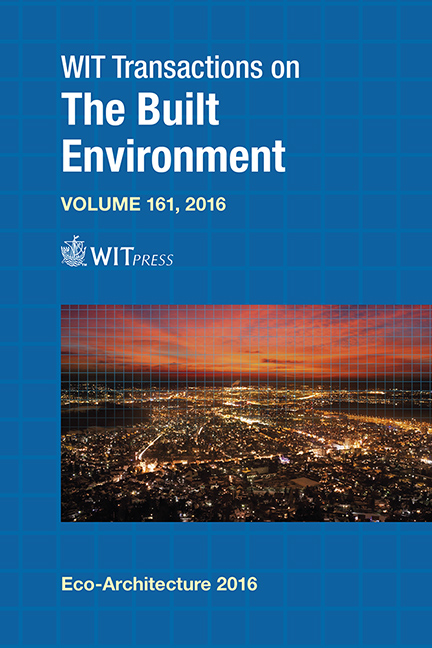Passive Cooling In The Restoration Of Historic Buildings
Price
Free (open access)
Transaction
Volume
161
Pages
10
Page Range
215 - 224
Published
2016
Paper DOI
10.2495/ARC160191
Copyright
WIT Press
Author(s)
L. Capuano, E. Laurini, P. De Berardinis
Abstract
Ancient villages are one of the most fascinating expressions of the Italian historical heritage. They are unique in their culture, landscape, and architecture, representing a huge potential for the socio-economic recovery of remote in lands, which tend to be exposed to the risk of abandonment. In order to achieve a successful recovery of these villages, the local critical climatic factors must be analyzed with a holistic approach, rather than focusing on single aspects. For instance, an integration of sun exposure and natural ventilation analyses, allows to define comprehensive methodology which can help predicting the impact of these climatic parameters on the buildings. Often, the spontaneous layout of the urban fabric, typical of many villages, results in critical conditions during both the summer and the winter time and these conditions must be analyzed from all angles in order to be properly understood. For instance, optimal analyses require, at first, the elaboration of a three-dimensional model of an entire village; then, a check and verification tool for the main climatic parameters can be developed. At the Italian latitudes, during winter time objects have a greater shadow field at midday. During summer time instead, the shadows have a shorter extent when the sun is at its zenith, whilst they reach their maximum at sunrise and sunset. It is well to outline what are the areas at risk from overheating in the summer and which are in perpetual shade in winter. Based on these solar analysis observations it is possible to detect and discriminate those areas that in the summer may be more exposed to sunrays and experience overheating, from those that during winter are in complete shade. Also, a combined analysis of dynamic shadow projections and trail winds allows to define the relationship between site, sunshine and wind. As very often the local climate can have very variable wind conditions at different times of the year, a creation of a passive cooling system is possible through the identification of thermal energy storage areas, appropriate materials, surface treatments, and optimal design strategies for wind ventilation. We propose to redirect wind flows in specific areas through architectural devices which favor the effect of natural ventilation and help cooling the buildings down.
This paper presents a series of optimal design solutions and intervention strategies aiming to mitigate the risks of weathering for those buildings that are potentially affected by critical climatic conditions with a minimal impact on the existing environmental and morphological context.
Keywords
passive cooling, historical buildings, thermal storage, climate





